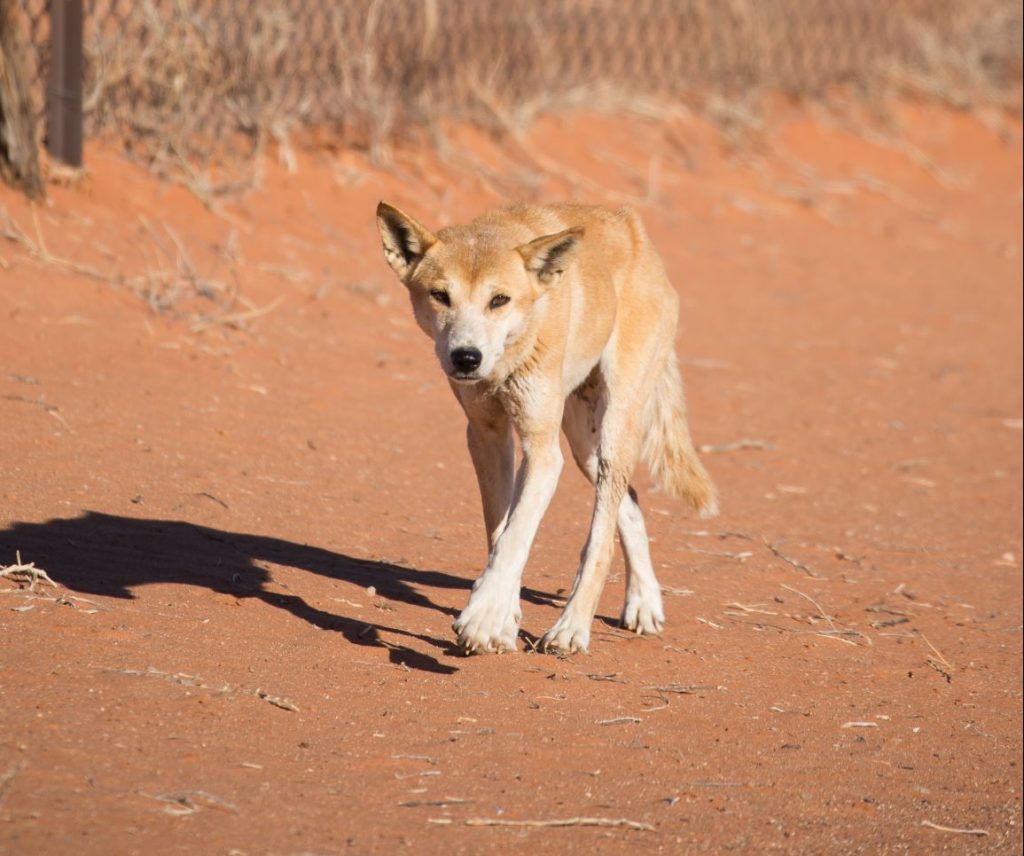
DID you ever wonder what happens when the apex predator is removed from the ecosystem?
A recent study by the University of NSW shows that the impact of removing dingos from the landscape can be seen from space.
Following 32 years worth of satellite images it is clear that the areas inhabited by dingos have better long term growth when compared to the areas without dingoes.
While the research area studies imagery with site-based field research on both sides of the Dingo Fence in the Strzelecki Desert the impact of Dingoes in the local environment will have similar benefits.
“Dingoes indirectly affect vegetation by controlling numbers of kangaroos and small mammals,” says Professor Mike Letnic, senior author of the study and researcher at UNSW’s Centre for Ecosystem Science.
“When dingoes are removed, kangaroo numbers increase, which can lead to overgrazing.
“This has follow-on effects to the entire ecosystem.”
The Dingo Fence, which spans across parts of Queensland, NSW and South Australia, was erected in the 1880s to keep dingoes away from livestock.
At 5600 kilometres long, it’s one of the longest structures in the world.
NASA and United States Geological Survey’s Landsat program – which has been taking continuous images of the area since 1988 – has made landscape-wide analysis possible.
“The differences in grazing pressure on each side of the fence were so pronounced they could be seen from space,” says Prof. Letnic.
The satellite images were processed and analysed by D Adrian Fisher, a remote sensing specialist at UNSW Science and lead author of the study.
He says the vegetation’s response to rainfall is one of the key differences between areas with, and without, dingoes.
“While rainfall caused vegetation to grow on both sides of the fence, we found that vegetation in areas without dingoes didn’t grow as much – or cover as much land – as areas outside the fence.”
Dingos are the Australian native Apex Predator.
Apex predators play an important role in maintaining the biodiversity of an ecosystem.
Removing them from an area can trigger a domino effect for the rest of the ecosystem – a process called trophic cascade.
For example, an increase in kangaroo populations can lead to overgrazing, which in turn reduces vegetation and damages the quality of the soil.
Less vegetation can hinder the survival of smaller animals, like the critically endangered Plains Wanderer.
Changes to vegetation triggered by the removal of dingoes have also been shown to reshape the environment by altering wind flow and sand movement.
“The removal of apex predators can have far-reaching effects on ecosystems that manifest across very large areas,” says Prof. Letnic.
“These effects have often gone unnoticed because large predators were removed from many places a long time ago.
“The Australian dingo fence – which is a sharp divide between dingo and non-dingo areas – is a rare opportunity to observe the indirect role of an apex predator.”
“Non-photosynthesizing vegetation has a different reflectance spectrum to photosynthesizing vegetation,” says Dr Fisher.
The satellite imagery and site analysis clearly showed dingoes played a central role.
“There were clear differences in landscape on either side of the dingo fence,” says Dr Fisher.
“Dingoes may not be the whole explanation, but they are a key part of it.”
By Marian SAMPSON

Being saying this for many years but farmers don’t seem smart enough to see it.